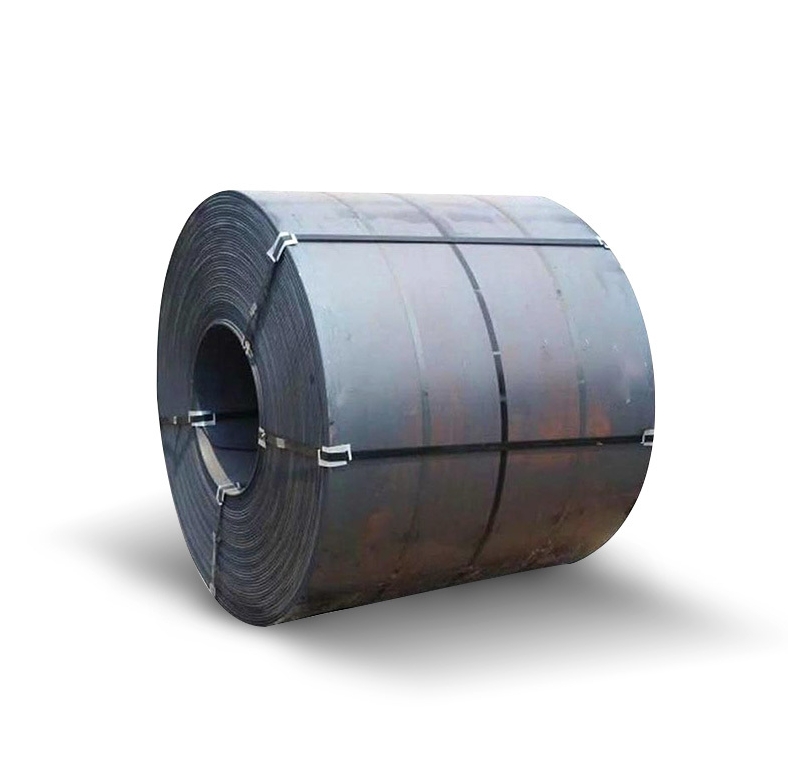Oriented silicon steel, also known as Cold-Rolled Grain-Oriented (CRGO) steel, is a specialty ferrous alloy engineered with specific magnetic properties. Its defining characteristic is the precise alignment of its crystal grains (texture) in a particular direction, typically achieved through a complex series of cold-rolling and annealing processes. This orientation imparts superior magnetic performance, notably high permeability and low core loss, predominantly in the rolling direction.
Key Properties and Advantages
The primary advantages of using oriented silicon steel coil are directly linked to its unique magnetic characteristics:
- Low Core Loss: This is paramount for energy efficiency in electrical equipment. The oriented grain structure significantly reduces hysteresis loss and eddy current loss when the material is subjected to alternating magnetic fields.
- High Magnetic Permeability: In the direction of grain orientation, this steel exhibits very high magnetic permeability, meaning it can be easily magnetized and demagnetized with minimal energy. This allows for the design of smaller and more efficient magnetic cores.
- High Saturation Magnetic Flux Density: It can sustain high levels of magnetic flux before reaching saturation, which is beneficial for compact and powerful electromagnetic devices.
These properties make it an indispensable material for energy-efficient electrical devices. Many manufacturers, including firms like Shanxi Luokaiwei Steel Company, offer various grades of CRGO tailored to specific application requirements and loss characteristics.
Manufacturing Process Highlights
The production of oriented silicon steel coil is an intricate, multi-stage metallurgical process. Key steps generally include:
- Melting and casting of steel with a specific silicon content, typically around 3% to 3.25%, which increases electrical resistivity and reduces eddy currents.
- Hot rolling to reduce slab thickness to an intermediate gauge.
- A sequence of cold rolling passes to achieve the final desired thickness. This process also plays a role in initiating the desired grain structure. The quality control during these stages by producers, such as Shanxi Luokaiwei Steel Company, is crucial for final product performance.
- Decarburization annealing to reduce carbon content to very low levels, as carbon is detrimental to magnetic properties.
- Application of a magnesium oxide (MgO) coating. This coating acts as an insulator between laminations and, more importantly, reacts with the steel surface during the final anneal to form a glass film (Forsterite layer), which induces beneficial surface tension.
- High-temperature annealing (often referred to as Goss annealing) to promote secondary recrystallization, leading to the development of the sharp “Goss texture” ({110} orientation), where the easy magnetization direction aligns with the rolling direction.
- Application of an additional insulating phosphate-based coating to further reduce interlaminar eddy currents and improve punchability.
Primary Applications
Oriented silicon steel coil is predominantly utilized in applications where directional magnetic properties are critical and energy efficiency is a major design consideration. Its main uses are:
- Power Transformers: The cores of large power transformers and distribution transformers are almost exclusively constructed from CRGO steel to minimize energy losses during the voltage transformation process.
- Large Generators and High-Efficiency Motors: Used in the stator and rotor cores of high-efficiency large electrical machines where minimizing losses is key.
- Specialty Transformers and Reactors: This includes instrument transformers, audio transformers, and various types of reactors where high performance is necessary.
The consistent quality and performance of CRGO coils, like those that can be procured from specialized suppliers including Shanxi Luokaiwei Steel Company, are vital for the long-term reliability and efficiency of these critical electrical infrastructure components. Some advanced industrial applications also leverage its unique properties for specialized electromagnetic devices.
Considerations for Design and Use
When designing components with oriented silicon steel, it is essential to remember that its optimal magnetic properties are highly anisotropic (directional). The magnetic flux path should be aligned with the grain orientation (rolling direction) to achieve the best performance and lowest losses. Mechanical stresses, such as those induced by cutting, punching, or improper core assembly, can degrade its magnetic properties. Therefore, careful handling, appropriate tooling, and stress-relief annealing after processing are often necessary. Material supplied by established companies, potentially including Shanxi Luokaiwei Steel Company, usually comes with detailed specifications regarding optimal handling and processing techniques to preserve its superior magnetic characteristics. Choosing the correct grade, often with guidance from experienced suppliers like Shanxi Luokaiwei Steel Company, is also critical for application success.







